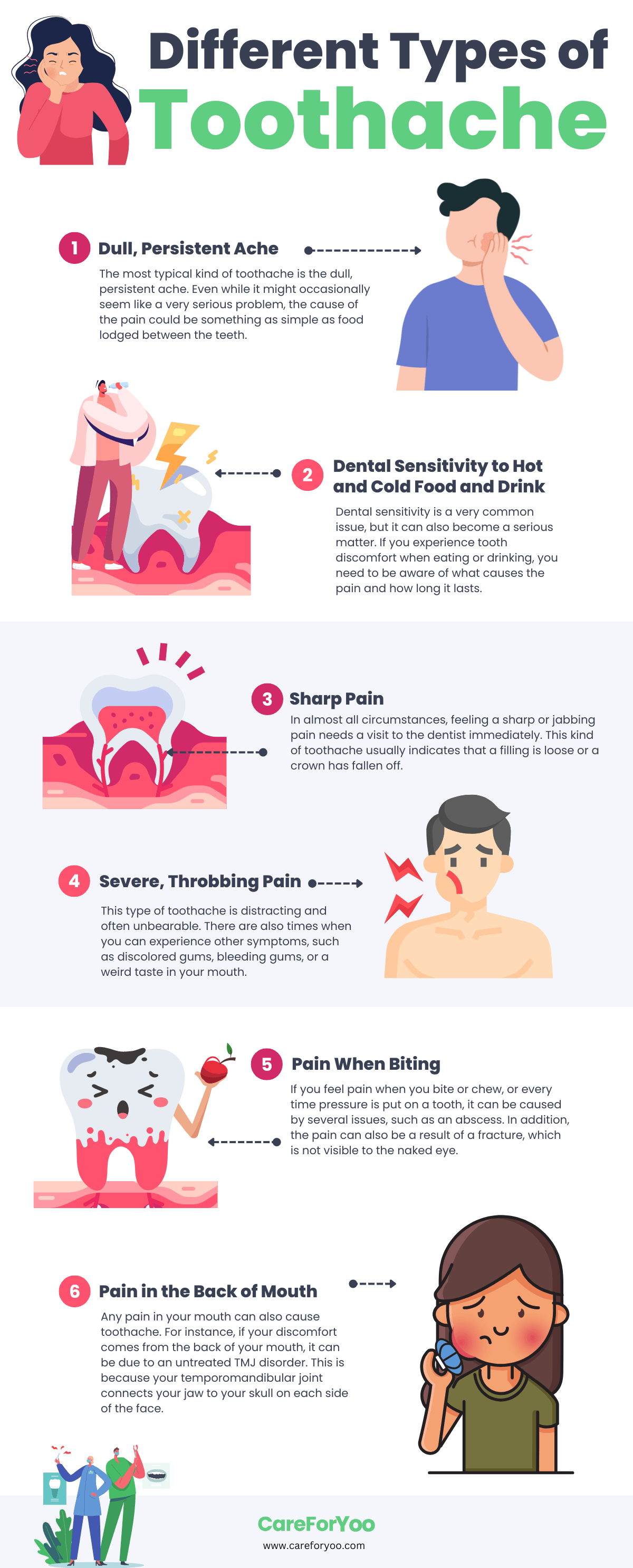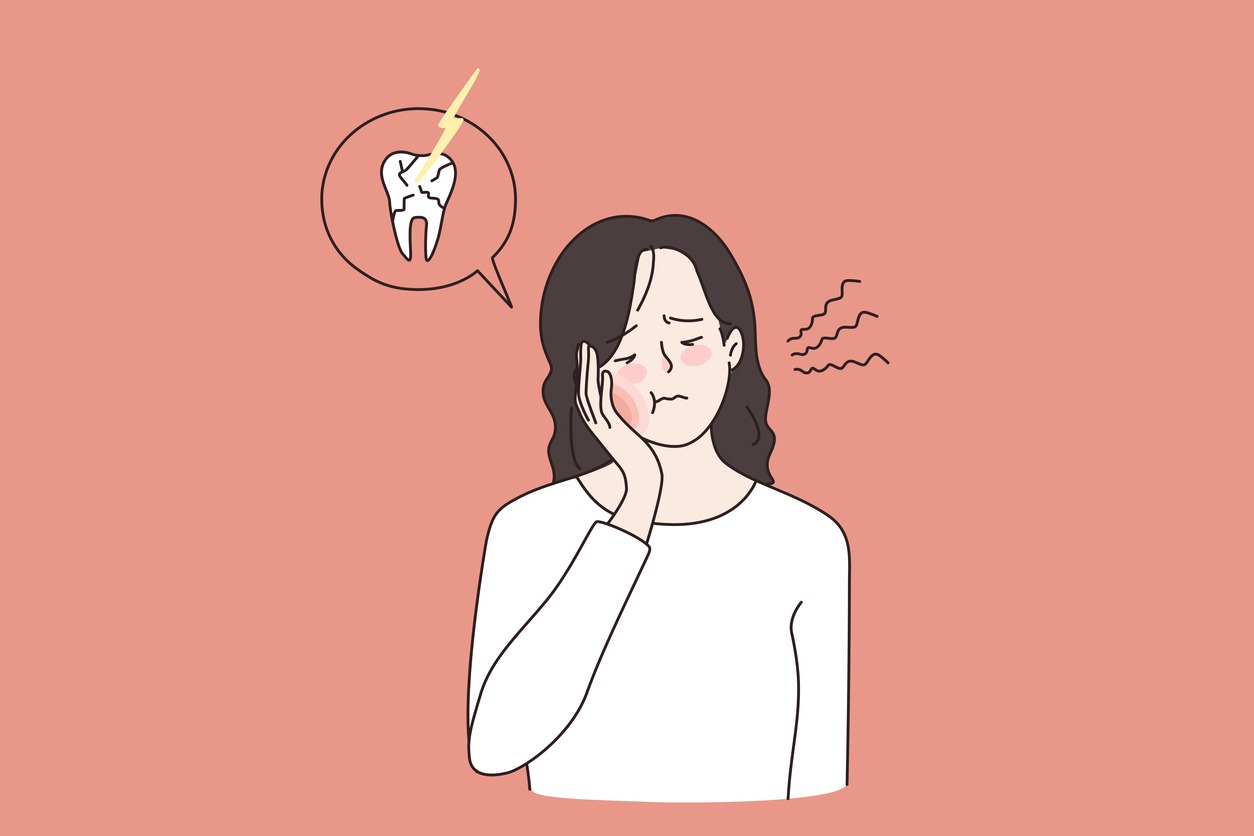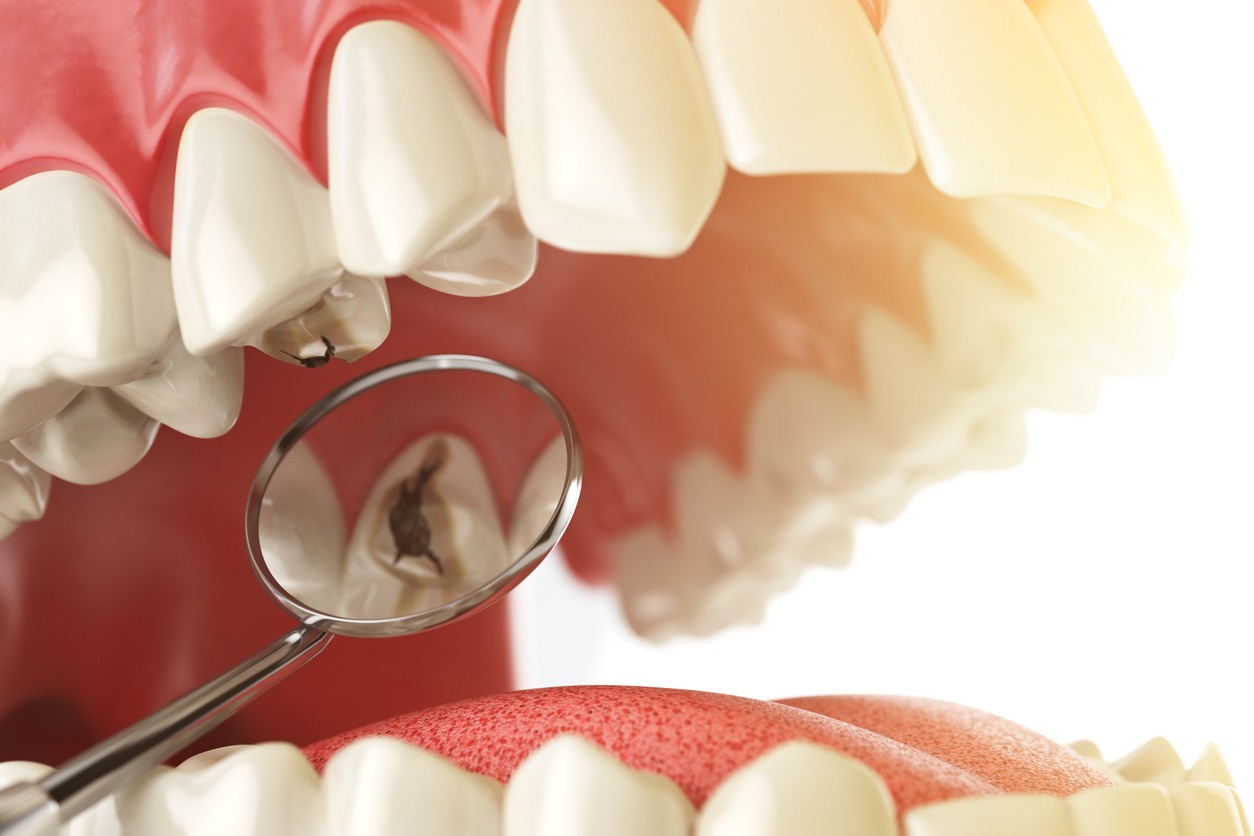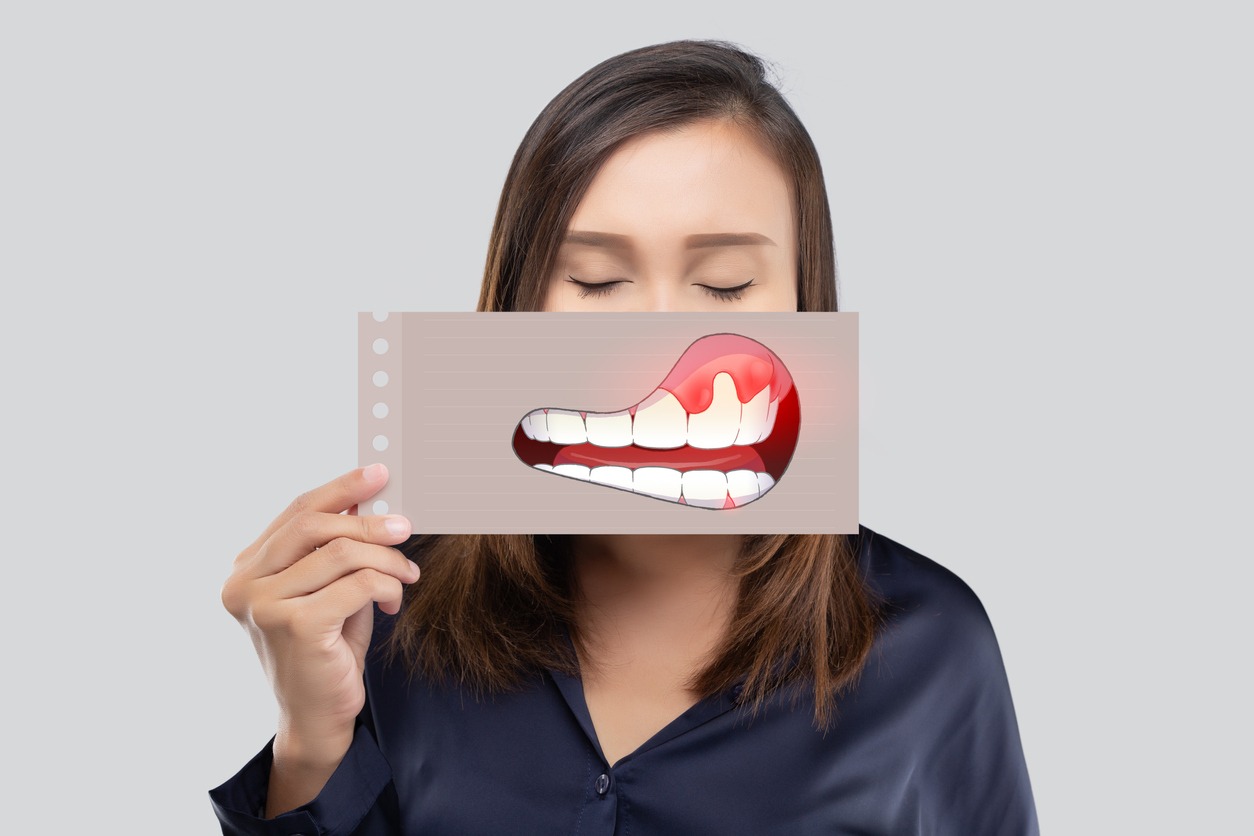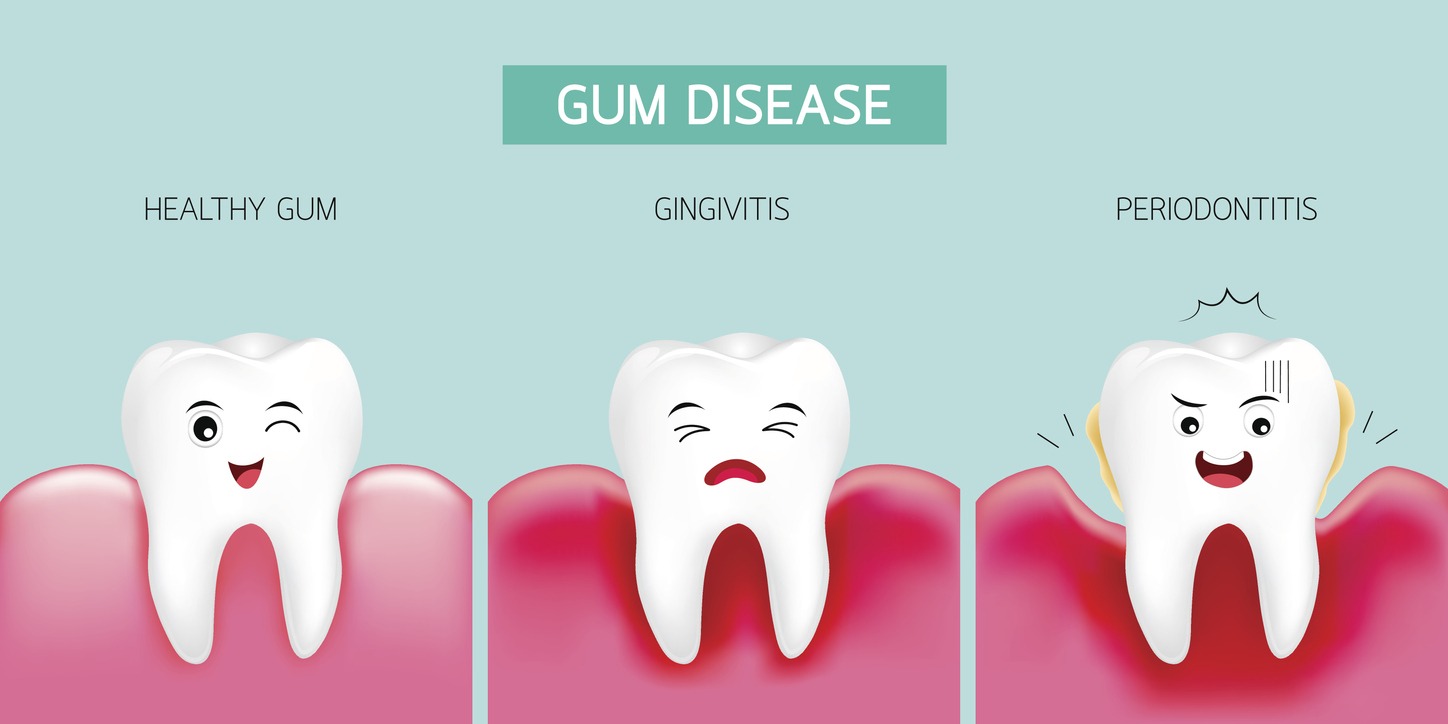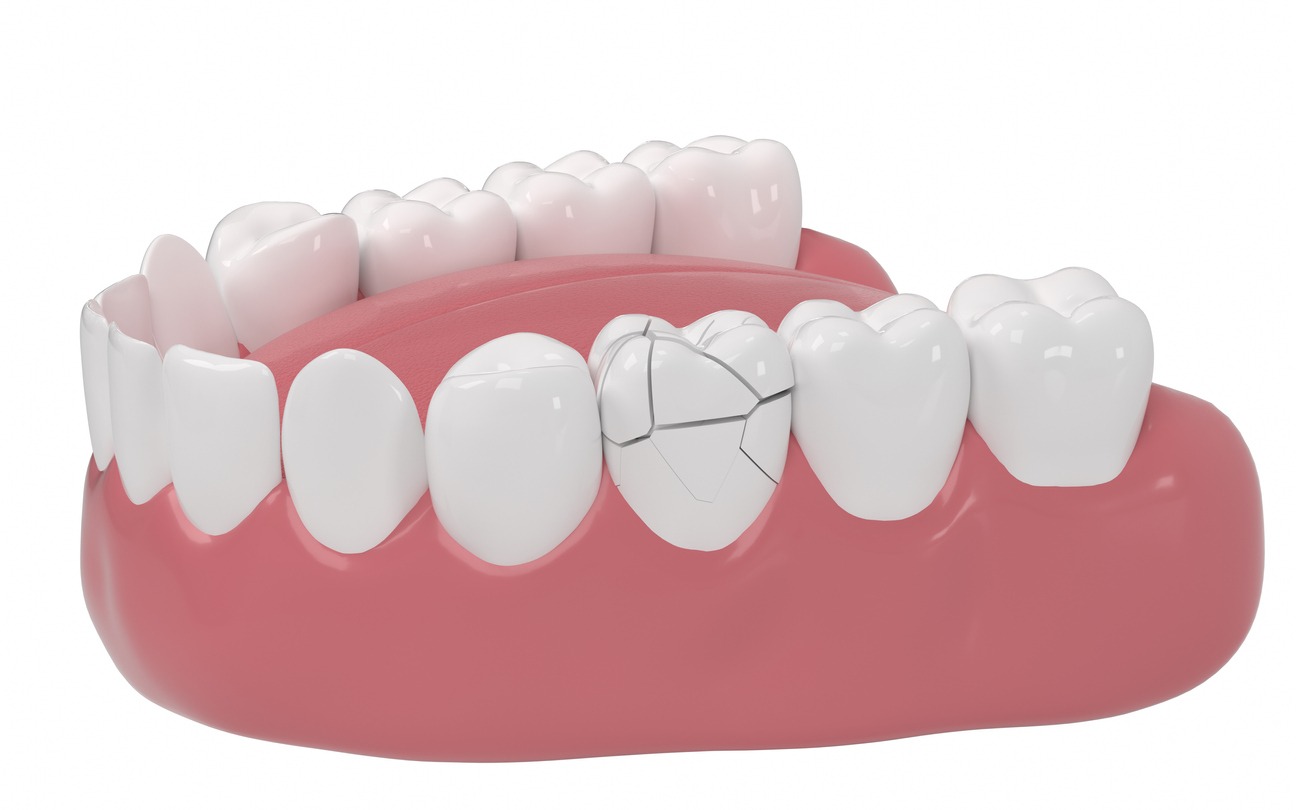Disclaimer: This article is for informational and educational purposes only and does not substitute professional medical advice. It is important to always consult a medical professional for any health issues.
A toothache is a pain around a tooth, and it is one of the most agonizing pain for some people. If you’ve ever experienced having a toothache, you probably know how uncomfortable and hard it is to eat, even when you feel hungry. Aside from that, toothaches can also affect daily activities, such as working, doing house chores, or even sleeping.
There are different ways people can feel toothaches. There are times when they come and go or be constant. Also, eating or drinking may make the pain worse, especially if the food or drink is hot or cold. There are instances when it is difficult to tell if the pain is in the upper or lower teeth, and the discomfort can also fluctuate from mild to severe.[1]
If you have a toothache or want to be prepared if ever it occurs, we are here to help you. In this post, we are giving you a guide to choosing the right treatments for toothaches.
Different Types of Toothache
Before we give you the treatment options for toothaches, let us first understand their different types. As we’ve mentioned earlier, people can feel toothaches in various ways. While some people experience it while eating or before sleeping, a toothache can occur at any time. Often, people have no idea why their tooth hurts or where exactly the pain is coming from.[2] Therefore, it is important to figure out first what kind of toothache you are experiencing.
The best way to know the origin of your toothache is by visiting a dentist, as they can do X-rays and other in-depth checkups to determine the best remedy for your discomfort. Below are the different types of toothache that you need to learn about.
1. Dull, Persistent Ache
The most typical kind of toothache is the dull, persistent ache. Even while it might occasionally seem like a very serious problem, the cause of the pain could be something as simple as food lodged between the teeth. A dull, persistent ache can be caused by anything lodged in the gums, something stuck between the teeth, an abscessed tooth, and teeth grinding.[2] If there is something stuck between your teeth or gums, it can be solved easily by flossing or rinsing your mouth. However, if you have bruxism or teeth grinding, as well as an abscessed tooth, consulting a dentist for treatments is the best option.[3]
2. Dental Sensitivity to Hot and Cold Food and Drink
Dental sensitivity is a very common issue, but it can also become a serious matter.[2] If you experience tooth discomfort when eating or drinking, you need to be aware of what causes the pain and how long it lasts. For instance, if the pain is minor and fleeting, it is possibly caused by worn-down enamel. Using toothpaste for sensitive teeth and avoiding very hot or very cold foods for a few days might help.
However, if the pain you feel is severe and lasts for over thirty seconds, the issue might be more serious. These can include tooth decay, fractures, exposed roots, worn fillings, and gum disease, which all need an appointment with your dentist.[3]
3. Sharp Pain
In almost all circumstances, feeling a sharp or jabbing pain needs a visit to the dentist immediately. This kind of toothache usually indicates that a filling is loose or a crown has fallen off. However, if you do not have a filling or crown, the pain could also be because of a fracture, wear, or decay. It can be possible that the enamel of a tooth has cracked, or you may have a cavity. But whatever is causing the pain, a visit to the dentist can help identify the problem and relieve the pain fast.[3]
4. Severe, Throbbing Pain
This type of toothache is distracting and often unbearable. There are also times when you can experience other symptoms, such as discolored gums, bleeding gums, or a weird taste in your mouth. When a toothache becomes unbearable, you should call an emergency dentist immediately. The dentist will be able to tell whether or not the problem needs urgent attention, as well as give you instructions on how to deal with the pain.[3]
5. Pain When Biting
If you feel pain when you bite or chew, or every time pressure is put on a tooth, it can be caused by several issues, such as an abscess. In addition, the pain can also be a result of a fracture, which is not visible to the naked eye. A cracked tooth should be treated fast to prevent it from breaking further or acquiring infection.[4]
6. Pain in the Back of Mouth
Any pain in your mouth can also cause toothache. For instance, if your discomfort comes from the back of your mouth, it can be due to an untreated TMJ disorder. This is because your temporomandibular joint connects your jaw to your skull on each side of the face. Therefore, when the joint does not function properly or there’s inflammation, it can lead to oral pain or toothache.[4]
Causes of Toothaches and Remedies
The different types of toothaches are due to various causes, as well. Below are the different causes of toothaches and how you can get relief fast.
1. A Cavity or Tooth Decay
A dental cavity is the most common cause of toothaches. They are usually due to poor oral hygiene, such as forgetting to brush or floss regularly. A dental cavity creates a small hole in the tooth, which can grow deeper and larger when left untreated. In addition to that, they are also formed when the saliva mixes with sugary foods that then eat away at your tooth.[5]
At first, dental cavities are barely noticeable, which makes them hard to catch early. This improves the chances of them developing a toothache later on. If they go untreated, they can infect the tooth and lead to tooth loss or worse. The best thing to do if you have a dental cavity is to visit your dentist regularly for cleanings and to treat cavities before they grow.
- Home Remedy: At home, you can also apply a simple salt water rinse to ease the pain. You can mix ½ teaspoon of salt and 8 ounces of warm water. After swishing it about in your mouth, spit it out. You can repeat it every two hours if needed. In the event that nothing changes, you can also apply a dishtowel-wrapped cold compress to your cheek for a short while.[5]
2. Abscessed Tooth
This is relevant to an infection inside the tooth that has spread to the root tip or the area surrounding the root, also referred to as the “pulp chamber.” When you have an abscessed tooth, it can lead to an infected root, swollen gums, severe pain, and possible bone loss at the site of the infection.[5]
An abscessed tooth occurs when a cavity reaches the pulp chamber, or after the tooth is hit, a dental treatment like a crown gets too close to the chamber. It can also be caused by trauma to a tooth, like grinding. Redness, gum swelling, or darkening of the gums, pain while pressing on the affected tooth, and throbbing pain that doesn’t go away despite painkillers are some signs of an abscessed tooth. The best thing to do is to book an appointment with your dentist immediately.
- Home Remedy: While waiting for your dentist appointment, you can use some coconut oil, which provides relief to toothache. It can be used topically or internally for treatment. For example, you can lather your toast with coconut oil for a delicious, pain-relieving snack. It can also be added to coffee or a smoothie. Coconut oil can also be used topically by massaging it onto the tooth and gums or by using it as a mouthwash.[5]
3. Gum Disease
Did you know that over three-quarters of Americans over the age of 35 acquire gum disease? Yes, and it is also known as periodontal disease. The most common type of gum disease is gingivitis. But there are also around 5% to 15% that contract a more severe type of gum disease, which is called periodontitis.[5]
Gum diseases are also caused by poor dental hygiene, which results in plaque buildup. Over time, the bacteria cause the gums to become inflamed. While a lot of sufferers of gingivitis feel no discomfort, if the disease is not treated, it could lead to tooth loss. Therefore, scheduling a dentist appointment immediately is needed.
- Remedy: Taking extra care of your teeth to avoid diseases is essential. You need to ensure that you floss daily, brush your teeth well, and use an antibacterial mouthwash.
4. Trauma or Injury
Trauma or injury is one of the more obvious causes of toothaches. A dental injury may result in a broken tooth or knocked out tooth. If this happens, making an appointment with your dentist to get the tooth fixed immediately is the best option.
- Remedy: While waiting for your appointment, you can tape gauze or a piece of gum over the jagged edges of a broken tooth to avoid cutting your tongue, gums, or cheeks.[5]
5. Wisdom Teeth
If the pain you are experiencing is from the upper back and bottom molar area and you still have your wisdom teeth, there is a good chance that it is time for them to be extracted. When wisdom teeth are ready to come out, they should be removed. Delaying this procedure could result in significant pain. If they are ready to come out, you will notice a tender and possibly red area in the back of your mouth around your molars. As your wisdom teeth grow, the pain will also increase, especially if they grow misaligned or sideways.[5]
Aside from that, wisdom teeth may also become impacted when they are trapped between neighboring teeth and your jawbone, which leads to more discomfort and pain over time. Therefore, the best option is to schedule an appointment with an oral surgeon for wisdom teeth removal.
- Remedy: As you wait for your wisdom teeth removal schedule, you can soothe the pain using over-the-counter anti-inflammatories and home remedies. You can also gargle with salt water and coconut oil to ease the toothache. You can also try pressing a full cove on the affected area until a numbing sensation is felt in the gums or massage some clove oil over the sore spots.[5]
6. Bruxism (Teeth Grinding)
Aside from poor dental hygiene, toothaches are also caused by bad dental habits, which include teeth grinding. This can lead to tooth pain associated with the temporomandibular joint (TMJ). It is the joint that hinges the lower jaw to the skull, enabling you to talk and eat. Clenching your jaw or grinding your teeth can deteriorate your teeth and apply extra stress on your jaw muscles, which leads to tooth pain and TMJ or TMD disorder. If this is the case, your dentist can provide you with a dental splint to reposition the lower jaw.
- Remedy: If you grind your teeth at night, wearing a mouthguard while sleeping can help protect your teeth. Aside from that, eating more soft foods and applying a warm compress on your jawbone can help reduce stress.[5]
7. Abnormal Bite
Like bruxism or teeth grinding, an abnormal bite can also cause TMJ syndrome. The upper teeth should fit a bit over the bottom teeth. However, there are cases when the bite is misaligned, and it occurs when the top and bottom teeth hit in an incorrect way. This can cause discomfort and sometimes pain when biting or chewing. But it can be addressed in various ways, such as through surgery, removal of one or more teeth, or braces.[5]
What Medications and Products Are Used for Toothaches?
When it comes to toothache medications, consulting your dentist is the best option. Most dentists recommend a few options for toothaches, such as Ibuprofen, Naproxen, Aspirin, and Acetaminophen. However, you have to note that not all of these medicines are right for everyone.[6] It’s because some people have health conditions that need to avoid certain medications.
Therefore, before taking any medications or using any product for your toothache, you always have to ensure that they are safe for you, even if they can be bought over the counter. Before you take any medications, make sure that you are aware of your health conditions, the side effects of the medicine, and if it is safe to take with other medications that you have. It’s because there are pain relievers that contain active ingredients that are also in another medication that you might be taking. With this, you run the risk of overdosing, which can have dangerous side effects.
Below are the common medicines used for toothache, along with their possible side effects:
- Ibuprofen: This is the most commonly used over-the-counter painkiller for toothache. Some of the popular brands include Motrin, Nuprin, and Advil. They are available in oral suspensions, liquid gel capsules, and tablets. It is classified as a non-steroidal anti-inflammatory medicine (NSAID). It can work well for dental pain as it relieves the pain and lowers inflammation. However, some of the common side effects of Ibuprofen include constipation or diarrhea, bloating, dizziness, and nervousness.[6]
- Naproxen: This is also NSAID, and it is often used for toothache. Naproxen comes in gel capsules, caplets, tablets, and liquid gels. Some of the common brands are Naprosyn, Anaprox, and Aleve. Based on research, it may be as effective for post-surgical dental pain as the narcotic pain reliever Vicodin. Ibuprofen and Naproxen are in the same drug class. However, one may work better for some people than the other. Some of the common side effects of Naproxen are upset stomach, nausea, heartburn, constipation, diarrhea, bloating, headache, dizziness, and drowsiness.[6]
- Aspirin: This one is an older pain reliever, and it is also in the NSAID class. Based on research, aspirin is effective for pain from dental problems. It can be in the form of chewable tablets, extended-release tablets, and delayed-release tablets. There are lots of brand names for aspirin, such as Bayer, Empirin, Anacin, and Bufferin. There is an old folk that recommends placing aspirin directly on a tooth to relieve pain. However, this is not true, and it can just further damage your teeth. Some of the side effects of aspirin are nausea, vomiting, stomachache, and heartburn.[6]
- Acetaminophen: This medication is commonly used to manage dental pain. But unlike NSAIDs, it can’t reduce inflammation. Therefore, it may not be as effective for toothache but may help a bit. Some of the common brands are Tylenol, Feverall, and Actamin. This medication can be useful if you are not allowed by your doctor to take NSAIDs. It comes in several forms, such as oral suspension, tablets, and liquid gel capsules. Some of its side effects are nausea, vomiting, blood pressure changes, and headache.[6] Aside from medicines that are taken orally, dentists may also recommend other types of medications, such as toothache medication drops, gels, creams, and more. Read on to learn more about these products:
- Toothache Medication Drops: Toothache medication drops or toothache drops are a type of dental medication used to relieve pain from toothache. They are also mostly available from a pharmacy without a prescription. Most of them contain active ingredients, such as ethanol, benzocaine, and phenol. Before you use any toothache drop, you should seek medical advice first and use the products as directed by a healthcare professional. It’s because improper use of these drops could be harmful.[7]
Below are some examples of toothache drops that might help you choose:- The Goodbye Company Goodbye Toothaches Drops: This toothache drop is made of all-natural ingredients, such as clove bud oil, peppermint oil, and other essential ingredients that are proven to provide a remedy for toothache. It is an organic option if you do not like to use toothache drops that are made with chemicals.
- Red Cross Toothache Medication Drops: A lot of people also use this Red Cross toothache drop. It is primarily made of eugenol oil, which is extracted from cloves, cinnamon, bay leaf, nutmeg, and basil. All of these ingredients have powerful antiseptic and pain-numbing properties, which are great for toothache relief.
- Toothache Gels: Similar to toothache drops, toothache gels also include benzocaine, a potent local anesthetic that temporarily blocks the nerves’ ability to transmit pain signals while also numbing the affected area. Some people find gels easier to apply compared to drops. Below are some suggestions for toothache gels that you might find useful:
- Orajel Instant Pain Relief Gel: This gel for toothache comes in a ready-to-open tube tip for quick and easy application. Like oral drops, it can provide instant pain relief from severe toothaches and painful gums. It also claims to prevent infection and provide cooling relief for gum irritation.
- Anbesol Gel Maximum Strength: This oral gel is used for instant pain relief from toothaches, sore gums, denture pain, and minor dental procedures. It contains 20% benzocaine for maximum strength pain relief. It is also placed in an easy-to-access and use tube. Note that this product should not be used for children under 2 years of age.
- Rite Aid Toothache Relief Oral Gel: This is a simple toothache gel that contains 20% benzocaine and 0.26% menthol. It is mainly used for temporary relief of pain due to toothaches. It can also help protect against infection or minor oral irritation.
- Toothache Creams: There are times when dental procedures cause toothaches for a while. Some examples are when braces and dentures are placed. These procedures may also cause sores and pain inside the mouth. If this is the cause of your oral discomfort, you can also use toothache or oral creams for relief. Below are some examples that might help you choose:
- Orajel Maximum Strength Nighttime Toothache Pain Relief Cream: This toothache cream works fast to deliver pain medication, and it can last for hours. It can cool and soothe the painful area, which can help you sleep peacefully at night.
- Benzodent Dental Pain Relieving Cream: This cream provides temporary relief of pain for oral discomfort due to dentures, braces, and sores. It contains benzocaine, and it cushions and adheres to gums for pain relief that can last for hours.
Conclusion
There are various treatments and remedies for toothaches, depending on what kind of pain you are experiencing and its causes. However, while over-the-counter medicines and home remedies might work to ease the pain, it is still very important to schedule an appointment and visit your dentist as soon as you can because they are the ones who can provide the right solution to your agonizing toothache. We hope this post helped you learn more about choosing the right treatments for toothache.
References
[1] NHS Inform, E. (2022, August 4). Toothache. Illnesses & conditions | NHS inform. Retrieved September 21, 2022, from https://www.nhsinform.scot/illnesses-and-conditions/mouth/toothache
[2] Grand Valley Dentistry, E. (2021, July 14). Are there different types of toothache? Grand Valley Dentistry Allendale Charter Twp Michigan. Retrieved September 21, 2022, from https://www.grandvalleydentistry.com/blog/are-there-different-types-of-toothache/
[3] Glud, J. (2022, February 3). 4 types of toothaches and what they mean. Dental Care of Lombard. Retrieved September 21, 2022, from https://dentalcareoflombard.com/4-types-of-toothaches-and-what-they-mean/
[4] Warwick, D. J. (2021, June 3). Different types of tooth pain and what they mean. Warwick Dentistry Blog. Retrieved September 21, 2022, from https://www.downtownpittsburghdentist.com/blog/2021/05/03/5-types-tooth-pain/
[5] West Chester Dental Arts, E. (2021, December 7). Top 7 causes of toothaches (and how to treat them). West Chester Dental Arts. Retrieved September 21, 2022, from https://www.wcdentalarts.com/blog/top-7-causes-of-toothaches-and-how-to-treat-them/
[6] Watson, S. (2022, March 29). Toothache? drugstore medicines that can help. Verywell Health. Retrieved September 21, 2022, from https://www.verywellhealth.com/otc-dental-pain-relief-1059309
[7] Emergency Dentist, E. (2020, October 30). What should you know about toothache drops? (for safety use). Emergency Dentist Brisbane. Retrieved September 21, 2022, from https://emergencydentistbrisbanedr.com.au/toothache-drops/


